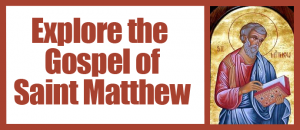 In the last issue I suggested that the last three sentences of Matthew’s Gospel combine affirmation, imperative and promise. I shared with you the affirmation that is there. The affirmation was that Jesus proclaimed that He had been granted “all authority in heaven and on earth. Then follows the imperative.
In the last issue I suggested that the last three sentences of Matthew’s Gospel combine affirmation, imperative and promise. I shared with you the affirmation that is there. The affirmation was that Jesus proclaimed that He had been granted “all authority in heaven and on earth. Then follows the imperative.
Imperative: “Go therefore and make disciples of all nations, baptizing them in the name of the Father and of the Son and of the Holy Spirit, and teaching them to obey everything that I have commanded you.” This is commonly known as “the Great Commission” and has been the classic foundation for Christian missionary work, especially since about 1800 and the birth of the modern missionary movement. Its purpose has been to convert the whole world to Christianity.
In Matthew, “nations” has a more limited meaning. In first-century Judaism and Christianity, it meant “Gentiles.” It did not mean then what it means today when we speak of the nations of the world. Rather, Matthew was affirming the validity of the mission to Gentiles, even though Jesus during His earthly life restricted His mission to Jews and told his followers to do likewise. Now, as the gospel ends, the risen Christ authorizes the mission to non-Jews.
Promise: In the final words of the gospel, the Jesus of Matthew promises his followers: “Remember, I am with you always, to the end of the age.” The ending returns to a theme announced at the beginning of Matthew’s gospel. In his story of Jesus’ birth, he names Jesus as “Emmanuel” (citing Isaiah 7:14) and explains that it means “God is with us” (1:23). Now the risen Christ says the same thing about Himself in first-person language: I am with you always. Jesus is Emmanuel, “God With us” Thus Matthew ends.
The gospel of Matthew does not produce well-balanced parts. Compared to Mark and Luke, Matthew is more obviously artificial, even contrived in its arrangement (recall that it has five parts that parallel the five books of the Torah). This does not imply that Mark and Luke are without any artificiality in their arrangement of the material. Even Mark, who seems to be most naïve and unstudied of the Evangelists, has arranged his narrative in an order other than the simple order of events. Matthew apparently wishes to make it clear that his arrangement is his own. He emphasizes the sayings of Jesus both in discourses and in narratives. This interest in his teaching is in sharp contrast to Mark. The same interest appears in Luke and John is almost entirely a report of the discourses of Jesus.
It is no accident that the words of Jesus are quoted more frequently from Matthew than from any other Gospel. Matthew was deeply interested in Jesus’ teaching.
